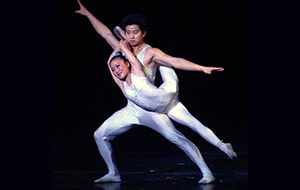 With gymnastics predominantly classed as a sport and dance an art, it seems the boundaries of the two are blurring as dancers aspire to more ways to stand out from the group. Of course gymnastics has always had a connection to dance – at the Olympic Games the gymnasts must incorporate an element of ‘dance’ to their floor routines – especially as dance is evolving to incorporate more content. Some may argue this is at the expense of technique and artistry.
With gymnastics predominantly classed as a sport and dance an art, it seems the boundaries of the two are blurring as dancers aspire to more ways to stand out from the group. Of course gymnastics has always had a connection to dance – at the Olympic Games the gymnasts must incorporate an element of ‘dance’ to their floor routines – especially as dance is evolving to incorporate more content. Some may argue this is at the expense of technique and artistry.
The penchée that goes past 180 degrees and the multiple ‘ice skater’ pirouettes with the foot at the ankle go some way in demonstrating the need by some dancers to impress and extend beyond the realm of dance. It goes without saying that a dancer needs a certain degree of suppleness in order to perform to a full capacity, however – especially in the competition circuit – dancers are encouraged to fill lyrical variations with oversplit legs and flips. For those adjudicating, this is not always desirable and has moved far from where dance is thought to be.
Pushing the boundaries of dance and choreography is not discouraged, in fact it is celebrated in choreographers, however the incorporation of acrobatics in dances can even be dangerous. YouTube can be a culprit, with young dancers privy to extreme dance, then inspired to overstretch and push themselves, believing this is the key to success. Injuries can occur that are not usually associated with dance, with young dancers attempting difficult gymnastic poses and extreme forms of stretching, risking immediate and long term physical harm. This is in addition to the fact it is harder to create real choreography than to insert a cartwheel!
Adding to the competition culture is the fact many young dancers see them as the ultimate goal; many competitions provide useful experience and feedback but dancing is not just about winning. As an extension, the gymnastic and acrobatic moves practised have little to do with the professional dance world – very few companies in today’s ballet or contemporary dance companies would require this. Companies would be more interested if the dancer can blend into their existing group and not miss basic elements that are foundations in the professional dance industry.
